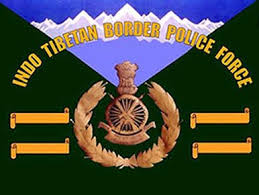Mastering Productivity: A Guide to Time Management with the Eisenhower Method

Introduction:
In our fast-paced world, effective time management has become a crucial skill for success in both personal and professional endeavors. The Eisenhower Method, named after the 34th President of the United States, Dwight D. Eisenhower, offers a systematic approach to prioritize tasks and make the most of your time. In this blog post, we’ll explore the principles of the Eisenhower Method and how you can apply them to enhance your productivity.
Understanding the Eisenhower Matrix:
The Eisenhower Method is often visualized through the Eisenhower Matrix, a four-quadrant grid that categorizes tasks based on their urgency and importance. The quadrants are as follows:
- Quadrant I – Urgent and Important:
- Tasks in this quadrant require immediate attention and are crucial to your goals.
- Examples include deadlines, emergencies, and important meetings.
- Quadrant II – Not Urgent but Important:
- This quadrant focuses on tasks that contribute to long-term goals and personal development.
- Examples include strategic planning, relationship-building, and skill development.
- Quadrant III – Urgent but Not Important:
- Tasks in this quadrant are often distractions and may not contribute significantly to your goals.
- Examples include some phone calls, emails, and meetings that can be delegated or minimized.
- Quadrant IV – Not Urgent and Not Important:
- This quadrant includes activities that are time-wasters and should be minimized.
- Examples include excessive social media use, mindless web surfing, and other non-value adding activities.
Applying the Eisenhower Method:
- Identify and List Tasks:
- Begin by listing all your tasks and responsibilities, both professional and personal.
- Categorize Tasks:
- Place each task in the appropriate quadrant based on its urgency and importance.
- Prioritize Quadrant II:
- Focus on Quadrant II, as this is where you can make significant progress toward your long-term goals.
- Delegate or Eliminate:
- Delegate tasks in Quadrant III when possible. Eliminate or minimize activities in Quadrant IV to free up valuable time.
- Use Time Blocks:
- Allocate specific time blocks to address tasks in each quadrant. This helps in maintaining focus and preventing procrastination.
- Regularly Review and Adjust:
- Periodically review and adjust your task list as priorities may change. Stay flexible and adapt to evolving circumstances.
Benefits of the Eisenhower Method:
- Improved Decision-Making:
- The method helps you make more informed decisions about where to invest your time and energy.
- Reduced Stress:
- By prioritizing and focusing on important tasks, you can reduce the stress associated with last-minute rushes and emergencies.
- Increased Productivity:
- Concentrating on tasks that align with your long-term goals enhances overall productivity and efficiency.
- Enhanced Work-Life Balance:
- The method encourages a balanced approach to work and personal life by highlighting the importance of both urgent and important tasks.
Conclusion:
The Eisenhower Method is a powerful tool that empowers individuals to take control of their time and prioritize tasks effectively. By adopting this method, you can achieve a sense of balance, reduce stress, and propel yourself towards long-term success. Remember, mastering time management is an ongoing process, so embrace the Eisenhower Method as a valuable ally in your journey toward increased productivity and fulfillment.






